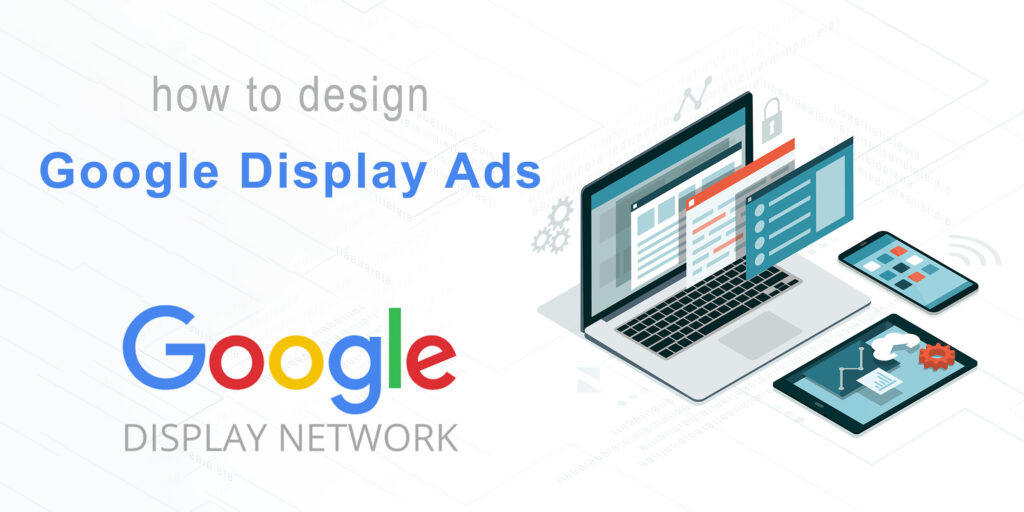In nowadays’ marketing strategy, online advertising has become an integral part of marketing strategies for businesses of all sizes. Among the various digital advertising platforms available, Google Display Ads stand out as an effective way to reach a wide audience and promote your products or services. However, creating compelling and visually appealing display ads that drive results can be a challenging task. In this comprehensive guide, we’ll walk you through the process of designing Google Display Ads that captivate your audience, boost your click-through rates (CTR), and ultimately, drive conversions.
1. Understanding Google Display Ads
Before delving into the design process, it’s essential to understand what Google Display Ads are and how they work. Google Display Ads are visual advertisements that appear on websites, apps, and other online platforms within the Google Display Network. These ads can take various forms, including static images, animated graphics, and even video clips. The primary goal of display ads is to capture the attention of your target audience, generate brand awareness, and drive potential customers to your website or landing page.
2. Setting Clear Goals
The first step in designing effective Google Display Ads is defining your advertising goals. Knowing what you want to achieve will guide the entire design process. Common goals for display ads include:
Brand Awareness: Increasing the visibility of your brand among potential customers.
Website Traffic: Driving more visitors to your website or landing pages.
Lead Generation: Collecting user information, such as email addresses or contact details.
Product Sales: Promoting specific products or services to boost sales.
App Installations: Encouraging users to download and install your mobile app.
Event Promotion: Promoting an upcoming event or special offer.
Clearly defining your goals will help you tailor your ad design and messaging to achieve the desired results.
3. Knowing Your Audience
Understanding your target audience is a crucial aspect of designing successful display ads. Google provides various audience targeting options, such as demographics, interests, and behaviors. You can also use remarketing to target users who have previously interacted with your website or app. By defining your audience accurately, you can create ads that resonate with their preferences and needs, increasing the likelihood of engagement.
4. Choosing the Right Ad Format
Google Display Ads offer various formats to choose from, including:
Responsive Display Ads: These adapt to the size and format of the ad space on different websites and apps. They require you to provide multiple assets, such as images, headlines, and descriptions, and Google automatically optimizes the ad for the best performance.
Image Ads: Static image ads can be effective when designed with eye-catching visuals and concise messaging.
Animated Ads: GIF or HTML5 ads can add motion and interactivity to your message, making them more engaging.
Video Ads: These can range from short video clips to longer promotional videos. Video ads are excellent for conveying complex messages and evoking emotions.
Interactive Ads: Rich media ads allow users to interact with your ad, such as expanding a product gallery or playing a mini-game.
Selecting the right ad format depends on your goals, budget, and creative assets. Responsive display ads are a good starting point for beginners, as they require less design work and automatically adapt to different placements.
5. Crafting Attention-Grabbing Visuals
Visual appeal is paramount when it comes to Google Display Ads. Here are some tips for creating eye-catching visuals:
High-Quality Images: Use high-resolution images that are clear and crisp. Blurry or pixelated images can deter users.
Relevance: Ensure that your visuals align with your brand and the message you want to convey. Consistency in branding helps build trust.
Contrasting Colors: Use colors that stand out and draw attention. Consider your brand colors and incorporate them where possible.
Typography: Choose legible fonts that complement your brand style. Use large, clear text that can be easily read even on smaller screens.
Whitespace: Avoid clutter. Leave enough whitespace to let your message breathe and make it easier for users to focus on your content.
Call-to-Action (CTA): Include a clear and compelling CTA button or text to encourage user interaction. Examples include “Shop Now,” “Learn More,” or “Get Started.”
6. Writing Compelling Ad Copy
While visuals are essential, the text accompanying your display ads plays a significant role in conveying your message. Here are some tips for writing compelling ad copy:
Be Concise: Display ads have limited space, so make every word count. Be concise and to the point.
Highlight Benefits: Focus on the benefits of your product or service. How will it improve the user’s life?
Use Keywords: Incorporate relevant keywords to improve ad relevance and visibility.
Create a Sense of Urgency: Encourage action by using phrases like “Limited Time Offer” or “Hurry, Sale Ends Soon.”
Personalize: Tailor your ad copy to the audience you’re targeting. Use language that speaks to their needs and interests.
A/B Testing: Experiment with different ad copy variations to see which ones perform best. Google Ads provides A/B testing features to help you optimize your messaging.
7. Designing Mobile-Friendly Ads
As mobile usage continues to grow, it’s crucial to design ads that look great on smaller screens. Here are some mobile-friendly design tips:
Responsive Design: Ensure that your ads are responsive and adapt well to different screen sizes and orientations.
Mobile-Optimized Images: Use images and visuals that are clear and engaging on mobile devices.
Thumb-Friendly CTAs: Place your call-to-action buttons where they’re easily clickable with a thumb on mobile devices.
Loading Speed: Optimize your ad’s loading speed for mobile. Slow-loading ads can lead to high bounce rates.
Test on Mobile Devices: Always test your ads on various mobile devices to ensure they appear and function correctly.
8. Adhering to Google’s Design Guidelines
Google has specific design guidelines and policies that advertisers must follow to ensure a seamless user experience and maintain the quality of the Display Network. These guidelines cover aspects such as ad dimensions, file sizes, animation limits, and prohibited content. Familiarize yourself with Google’s policies to avoid ad disapproval or suspension.
9. Creating Compelling Landing Pages
Your Google Display Ads are the first step in attracting potential customers. To ensure a seamless user experience and increase conversion rates, your landing pages must align with your ad’s messaging. Here are some tips for creating effective landing pages:
Consistent Messaging: Ensure that the message on your landing page matches the ad’s message. This provides a sense of continuity for users.
Clear Call-to-Action: Include a prominent and clear CTA on your landing page that guides users toward the desired action, such as making a purchase or filling out a form.
Mobile Optimization: Make sure your landing page is mobile-friendly, as many users will access it from smartphones and tablets.
Loading Speed: Optimize your landing page for fast loading times to reduce bounce rates.
Relevant Content: Provide relevant and valuable content that answers the user’s query or fulfills their expectations.
Trust Signals: Include trust-building elements, such as customer reviews, security badges, and contact information.

10. Tracking and Analyzing Performance
Designing Google Display Ads is not a one-time effort. To continually improve your ad campaigns, you must track and analyze their performance. Google Ads provides robust analytics and reporting tools to help you evaluate the effectiveness of your ads. Key metrics to monitor include:
Click-Through Rate (CTR): The percentage of users who clicked on your ad after seeing it.
Conversion Rate: The percentage of users who completed the desired action (e.g., making a purchase) after clicking on your ad.
Impressions: The number of times your ad was displayed to users.
Ad Position: Where your ad appears on the page.
Cost Per Click (CPC): The amount you pay each time a user clicks on your ad.
Return on Investment (ROI): The revenue generated compared to the cost of your advertising campaign.
Use these metrics to identify areas for improvement and make data-driven decisions to optimize your ad design, targeting, and messaging.
11. A/B Testing and Optimization
A/B testing is a crucial strategy for optimizing your Google Display Ads. It involves creating multiple variations of your ads and comparing their performance to determine which one is the most effective. Here are some elements you can test:
Ad Copy: Try different headlines, descriptions, and CTAs to see which combination generates the highest CTR and conversions.
Visuals: Experiment with different images, colors, and ad formats to determine which ones resonate best with your audience.
Landing Pages: Test different landing page designs and layouts to find the one that converts the best.
Targeting Options: Adjust your audience targeting parameters to see which demographics or interests perform the best.
Ad Scheduling: Experiment with different ad scheduling to determine the best times and days to display your ads.
Budget Allocation: Allocate your budget differently among various ad groups to see which ones deliver the best results.
Regularly analyze the results of your A/B tests and make adjustments accordingly. Over time, this iterative process will help you fine-tune your Google Display Ads for optimal performance.
Conclusion
Designing effective Google Display Ads is a blend of creativity, data analysis, and a deep understanding of your target audience. By setting clear goals, crafting compelling visuals and ad copy, adhering to design guidelines, and continuously optimizing your campaigns, you can create display ads that not only capture attention but also drive results. Remember that the digital advertising landscape is dynamic, so staying up-to-date with industry trends and user preferences is essential for long-term success. With dedication and a strategic approach, your Google Display Ads can become a powerful tool in your marketing arsenal, helping you reach and engage your audience effectively.
For more information, visit Bel Oak Marketing.





